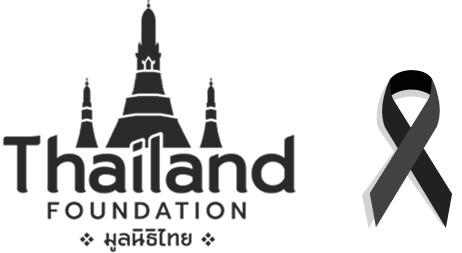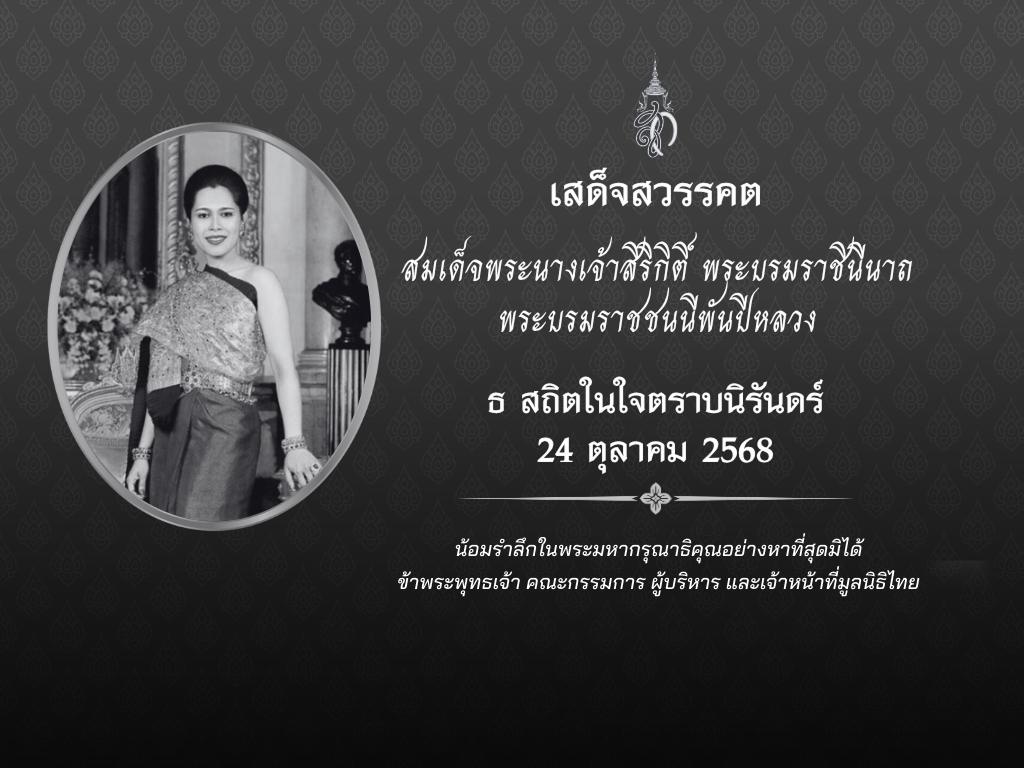
Photo credit: L’officiel Thailand
Introduction
A distinctive, handmade fabric known for its iridescent sheen, smooth texture and unique patterns, Thai silk is more than just a fabric, but a cultural symbol woven with the history and heritage of Thailand. It reflects centuries of the kingdom’s artisanal skill.
Thai silk has made its way from local villages to the royal court and international fashion runways, continuing to evolve, weaving its way into contemporary design while honoring the traditions that made it iconic.

Photo credit: Manager Online
What is Thai Silk?
At its heart, Thai silk is the product of a household industry, particularly in the farming communities in Thailand. The process begins with planting mulberry trees, of which leaves serve as the sole diet of silkworms. Families raise these silkworms with care, waiting as they spin themselves into cocoons. Once matured, the cocoons are harvested and boiled to extract the delicate silk filaments in a process called sao mai (สาวไหม), or reeling. In family-run workshops, these fine filaments are then hand-twisted, dyed with natural colors, and finally woven into fabrics.
The entirely handmade production preserves the silk’s natural characteristics, derived from the genetic traits of Thai silkworms. The result is a fabric that is soft, fluffy yet heavier than other silks, reflecting and refracting light across its surface, creating a shimmering effect that is particularly valued by both Thai and international admirers.

Photo credit: Khaosod
A Brief History of Thai Silk
Origins and development of silk weaving in Thailand
While the origin of Thai silk is believed to trace back to the southern regions of China, where ancestors of the Thai people once lived, archaeological evidence suggests that silk weaving may have developed independently in the Thai region as well. Discoveries in Udon Thani province, such as prehistoric silk fragments and patterning tools, date back over 3,000 years, indicating a deep-rooted silk culture in the area. The native Thai silk breed which produces yellow and slender cocoons differs significantly from the Chinese varieties.

Photo credit: กรมหม่อนไหม
Roles of the monarchy and government in elevating Thai silk
Governmental institutionalization of silk production began in 1903, when King Rama V (1853-1910) established the Department of Sericulture under the Ministry of Agriculture and opened a school to teach silk farming and weaving. Later, from 1969 to 1984, Thailand received crucial technical support from Japan, especially in disease control and silkworm egg production.
Her Majesty Queen Sirikit The Queen Mother (1932-present) also played a pivotal role in the global recognition of Thai silk in the 20th century by elevating the craft to a symbol of Thai identity. In 1976, she initiated the SUPPORT Foundation of Her Majesty Queen Sirikit the Queen Mother, or Soon Silpacheep in Thai (ศูนย์ศิลปาชีพ), to provide resources, training, and market access for silk artisans, creating sustainable careers and self-reliance. Her efforts earned her international acclaim, including the prestigious Louis Pasteur Award from the International Sericultural Commission in 2002. In 2007, she introduced the Royal Peacock logo as a certification mark for Thai silk, now recognized in 35 countries and territories. Her enduring dedication led to the establishment of Thailand’s Sericulture Department (กรมหม่อนไหม) in 2009, and in 2012, she was honored with the title “Mother of Thai Silk” on her 80th birthday.

Photo credit: Matichon

Photo credit: Daily News
Jim Thompson
Aside from royal initiatives, another important figure in Thai silk promotion is American businessman Jim Thompson, who commercialized Thai silk in the mid-20th century. After World War II, Thompson combined grassroots knowledge of Thai silk-making with his entrepreneurial savvy. He began by personally showcasing silk to tourists at the Oriental Hotel in Bangkok, sparking international curiosity. With a Thai business partner, he opened “La One” (ลาวัณย์) as a permanent silk shop before eventually founding the Thai Silk Industry Company Limited, expanding its presence with branches in New York and distributors across Asia. His designs graced the covers of top fashion magazines like Vogue,The NewYorkTimes,Reader’sDigest, andLife, and even made it into the Hollywood scene. The peak of Thompson’s influence came when Her Majesty Queen Sirikit chose his silk for royal outfits designed by Pierre Balmain for her state visit to Europe and the United States of America. Thompson’s achievement earned him the title “King of Thai Silk.”

Photo credit: Business Destinations
The Making of Thai Silk
Central to silk-making is sericulture, or the raising of silkworms. It is a time-consuming process that reflects the Thai people’s harmonious relationship with nature. After the cocoons are collected, the silk undergoes several stages of preparation before weaving. The threads are first extracted by boiling the cocoons and reeling the filaments from multiple cocoons into a single strand. The raw silk, naturally yellow, is then bleached using natural alkaline water before being dyed with natural colors. These threads are carefully prepared and arranged on the loom for weaving, with warp (the vertical line) and weft (the horizontal line) threads readied for different fabric techniques. Among the most celebrated weaving methods in Thailand are mat mee (มัดหมี่) a.k.a ikat, which involves resist dyeing of the threads before weaving to create intricate patterns, and brocade (or pha yok ผ้ายก), which incorporates extra wefts to form raised designs. Each region in Thailand has its own distinctive style, such as chok (จก), yok (ยก), khit (ขิด), and phrae wa (แพรวา).

Photo credit: bwildisan
Types of Thai Silk
There are several ways to categorize Thai silk. You may either focus on the weaving techniques and styles or the level of quality, as follows:
Traditional styles
- Cross Pattern or Pha Khat (ผ้าขัด)
In this technique, warp and weft threads are interlaced to create a smooth, uniform fabric. The Queen Sirikit Department of Sericulture classifies it into six categories based on thickness: light weight, medium weight, heavy weight, extra heavy weight, drapery weight, and upholstery weight.
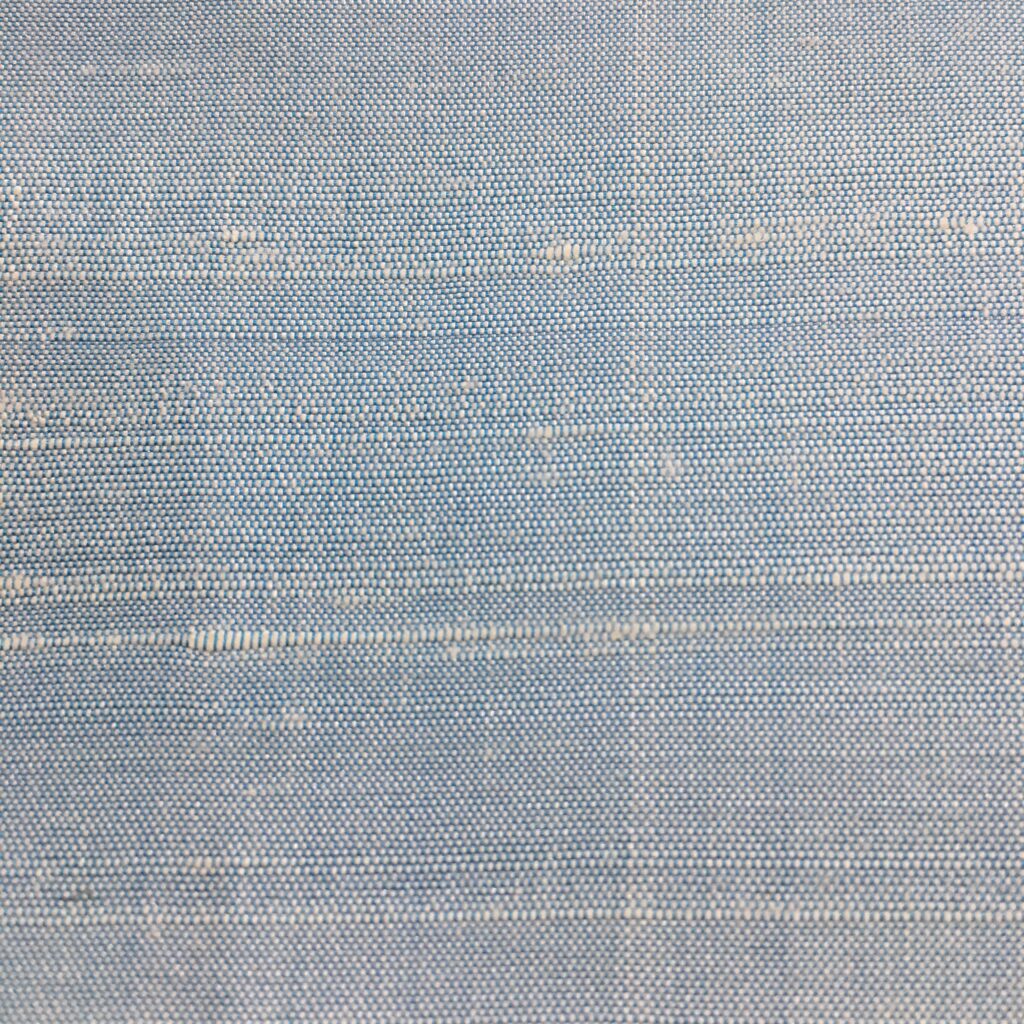
Photo credit: กรมหม่อนไหม
- Mat Mee Silk (มัดหมี่)
Mat mee silk is a highly complex tie-dyed weaving technique popular in Northeastern Thailand. Artisans tie sections of silk threads before dyeing them, creating intricate patterns where the dye doesn’t penetrate. When woven, the patterns will appear on the fabric like magic against the colored threads. It’s widely used in contemporary fashion for both men and women.
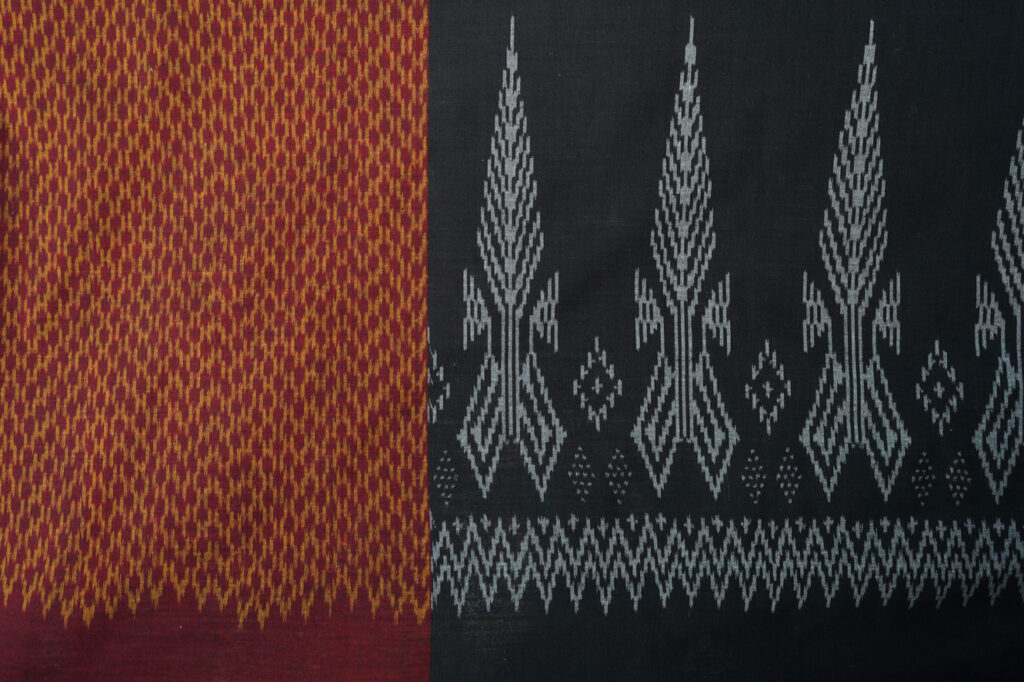
Photo credit: Thailand Creative & Design Center
- Khit Silk (ผ้าขิด)
Khit silk is characterized by its use of a tool called a “khit picker” or mai khit (ไม้ขิด), a wooden stick that lifts warp threads to form decorative patterns across the width of the fabric.

Photo credit: Thai Fabric Wisdom
- Jok Silk (ผ้าจก)
Jok silk is similar to Khit silk but more intricate, allowing for multi-colored patterns in a single row. Using tools like hedgehog quills instead of the khit picker, artisans manually interlace threads to “embroider” motifs into the weave. The technique allows for expressive, detailed designs that resemble hand embroidery.
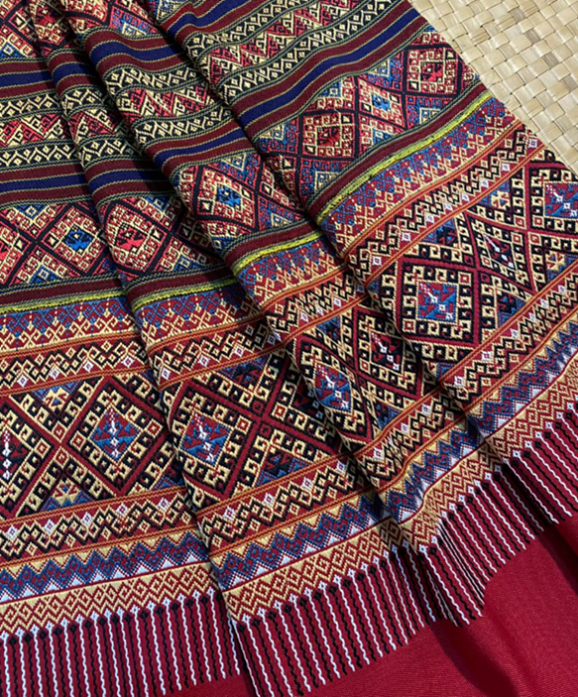
Photo credit: Facebook: ผ้าซิ่นตีนจกไท-ยวน
- Yok Silk (ผ้ายก)
Yok silk, translated to “raised silk,” features embossed-like patterns woven with colored silk, silver, or gold threads. It is a luxurious textile often reserved for the upper class and royal occasions due to its complexity, time-consuming process, and exquisite appearance.
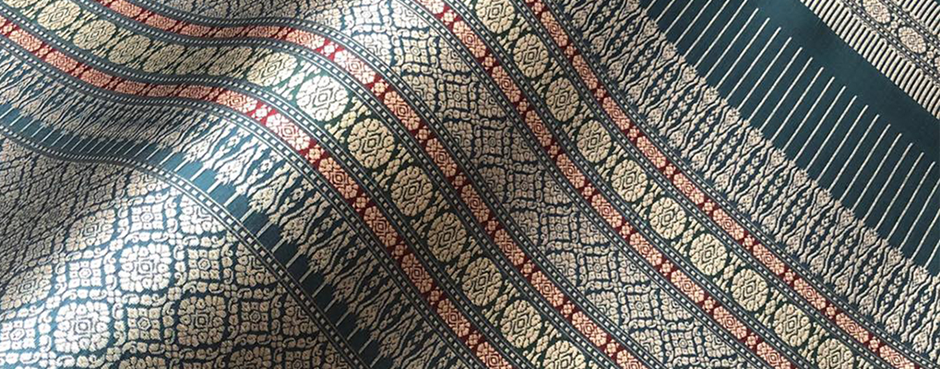
Photo credit: Phayokdok
- Water Flow Pattern Silk (ไหมลายน้ำตก)
This style is woven using a cross-pattern method that incorporates multicolored weft threads to mimic the movement of flowing water. It is often combined with other weaving styles, such as Chok or Khit, resulting in layered, vibrant patterns.
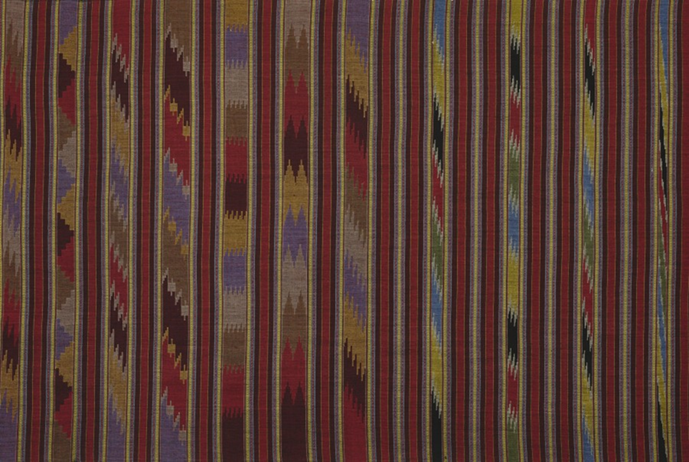
Photo credit: Thai Fabric Wisdom
- Phrae Wa Silk (ไหมแพรวา)
Phrae Wa is a shawl-like silk piece, called sabai (สไบ), traditionally woven by the Phu Thai people, especially in Kalasin province. It is created using the Chok technique, where silk threads are manually inserted using the weaver’s little finger. Declared a national cultural heritage in 2014, Phrae Wa silk holds a GI (Geographical Indication) mark, certifying its origin and authenticity.

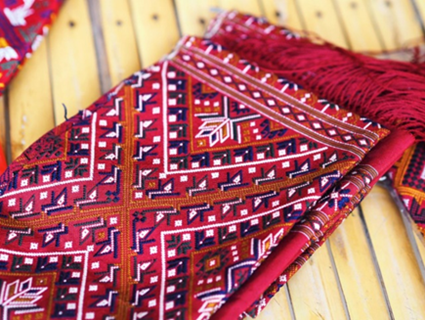
Photo credit: Shutterstock
- Turtle Shell Pattern Silk (ผ้าเกล็ดเต่า)
Turtle shell pattern silk features a distinctive grid-like design that resembles traditional bamboo basket weaving. The pattern is achieved by using silk threads from the same color family but with varying shades, creating an alternating light-and-dark effect.
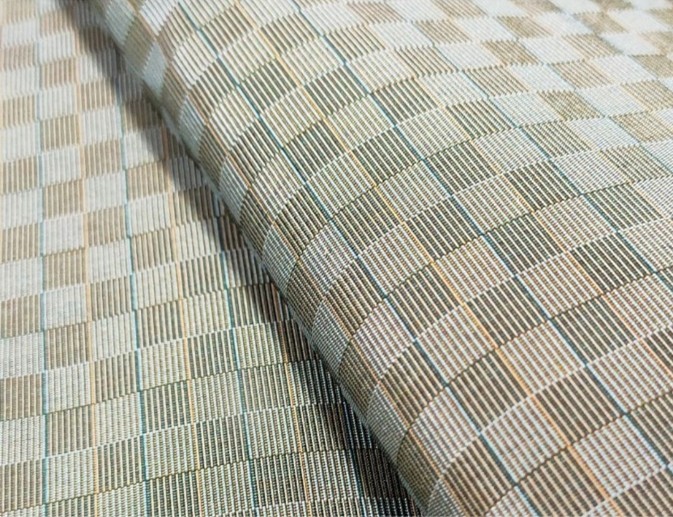
Photo credit: Facebook: มูลนิธิ
ส่งเสริมศิลปาชีพฯ
- Squirrel Tail Silk
Squirrel tail silk is named for its resemblance to the shimmering, rippling pattern of a squirrel’s tail. This effect is created by twisting two or three silk threads of similar hues but different tonal intensities into one weft thread. The result is a strong, sturdy, lustrous fabric with a dynamic interplay of color that is both durable and elegant, ideal for long-term use.
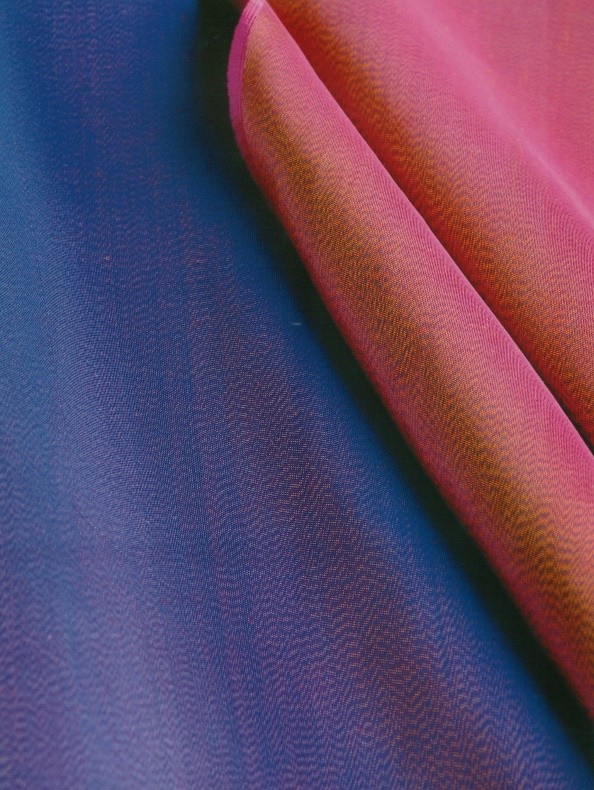
Photo credit: Queen Sirikit Museum of Textiles
Quality According to the Peacock Standard
The Thai silk quality certification mark, the peacock logo, is used to certify silk that is produced in Thailand using genuine silk threads and dyed in environmentally friendly ways. Her Majesty Queen Sirikit granted the Peacock symbol as a quality mark for four categories of Thai silk.
- Royal Thai Silk (Golden Peacock) certifies locally sourced silk that is entirely handmade using local craftsmanship, dyed with natural substances.

Photo credit: กรมหม่อนไหม
- Classic Thai Silk (Silver Peacock) certifies silk made with local craftsmanship while incorporating modern tools and processes at certain steps of production.
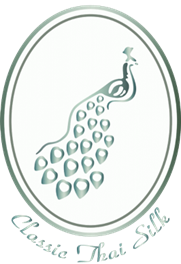
Photo credit: กรมหม่อนไหม
- Thai Silk (Blue Peacock) certifies silk made with local craftsmanship but adapted to incorporate modern technology and to meet contemporary business standards.
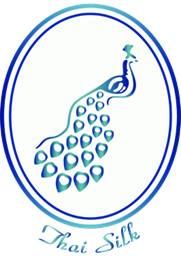
Photo credit: กรมหม่อนไหม
- Thai Silk Blend (Green Peacock) certifiescraftsmanship silk of authentic natural silk filaments blended with other natural or synthetic fibers.
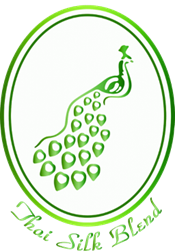
Photo credit: กรมหม่อนไหม
The symbol has been registered as an official certification mark for Thai silk products in 35 countries and territories, including 27 nations in the European Union, as well as China, Norway, the Philippines, Malaysia, the United States, Singapore, India, and Hong Kong.
Her Majesty Queen Sirikit The Queen Mother always had deep appreciation for traditional textiles, which led to the development of modern Royal Thai dresses. This elegant blend of Thai heritage and royal refinement was a result of high creativity. Her Majesty sought to represent Thailand through traditional garments, using Thai silk and intricate brocades to embody Thainess.
National Identity
Today, these silk garments serve as formal national attire for women, each type reflecting both cultural identity and the appropriateness for different levels of formality, occasions, and ceremonial roles. The garments are used in all kinds of situations where the wearer wishes to present their Thai identity: from formal functions, to international beauty pageants, to traditional festivals. There are eight primary types of national Thai dress:
- Thai Boromphiman (ไทยบรมพิมาน)

- Thai Chakraphat (ไทยจักรพรรดิ)

- Thai Sivalai (ไทยศิวาลัย)
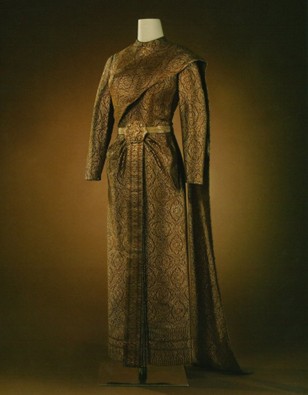
- Thai Amarin (ชุดไทยอมรินทร์)
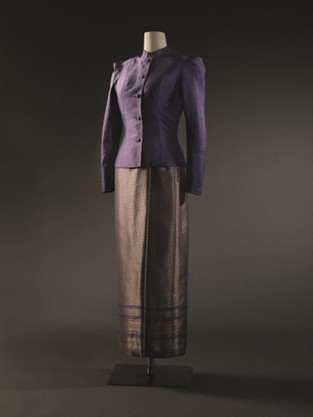
- Thai Chakri (ไทยจักรี)
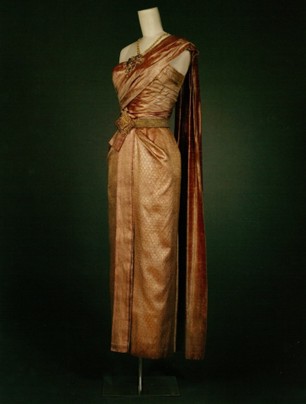
- Thai Dusit (ไทยดุสิต)
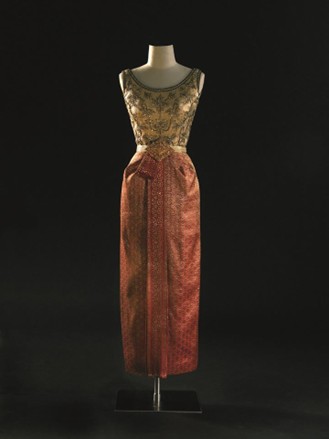
Thai Chitralada (ไทยจิตรลดา)
- Thai Chitralada (ไทยจิตรลดา)
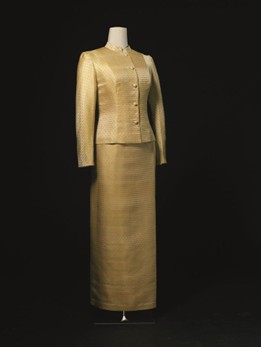
- Thai Ruean Ton (ไทยเรือนต้น)
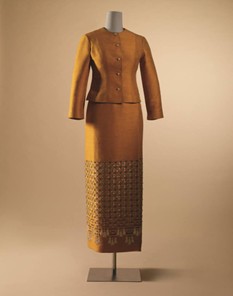
Aside from the eight formal forms of silk garments, there are also Thai Adapted Dresses. A modern evolution of traditional Thai dresses, this style creatively combines elements from the eight classic forms to suit contemporary needs and fashion trends. Though not standardized, it serves as a cultural ambassador in global fashion, reinforcing Thai heritage while promoting innovation and economic sustainability.
Thai Silk in Contemporary Times
In contemporary times, Thai silk, capturing the imagination of designers, has seamlessly woven itself into contemporary apparel, blending its luxurious texture and rich cultural symbolism with modern cuts, patterns, and tailoring. Thai silk is now featured in everyday wear, high fashion, furniture, and even lifestyle accessories. High fashion brands have also played a pivotal role in elevating Thai silk on the global stage. For instance, Lebanese designer Elie Saab drew inspiration from Thailand for his Spring-Summer 2023 “Paris dreams of Thai escape” couture collection at Paris Fashion Week. Similarly, the “Celebration of Silk – Thai Silk Road to the World” annual event initiated in 2009 has seen participation from designers across 60 countries. Thai designers like Vickteerut, Asava, Sretsis, and Theatre continue to innovate traditional Thai silk with contemporary designs, preserving its legacy while appealing to modern tastes.
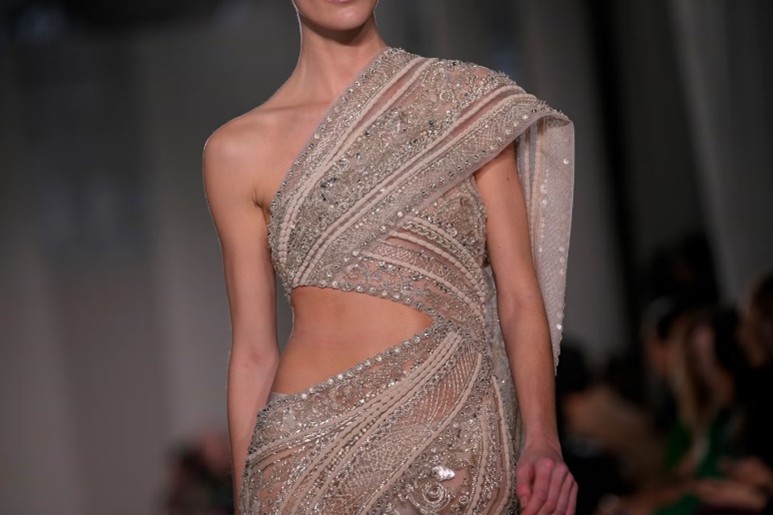
Photo credit: Indepe
Thai silk’s prominence extends beyond fashion to the realm of diplomacy, with Thai diplomats often wearing silk attire and presenting silk products as diplomatic gifts, symbolizing Thailand’s goodwill and cultural richness. The annual Thai Silk International Fashion Week in Bangkok not only showcases the craftsmanship of Thai silk but also fosters cross-cultural exchanges, with diplomats taking center stage.
How to Select Thai Silk
Because silk is a relatively high-end textile, selecting the right piece requires thoughtful consideration. You should pay attention to “touch, texture, and sheen” when selecting a piece of fabric to buy.
- Authenticity: First and foremost, you should try to ensure that you are purchasing genuine silk, as imitations made from synthetic or blended fibers can be deceptively similar in appearance. Buying from reputable sources can help to ensure you are receiving genuine products.
- Color: It is also important to choose silk that is colorfast. Dipping a corner of the fabric in water will reveal whether the dye bleeds. If it is a plain colored fabric, the color must be consistent throughout the piece.
- Consistency: The fabric should also be evenly woven, without inconsistencies in thickness or pattern.
- Usage: The intended use should guide the selection – thicker silk is best suited for upholstery or curtains, while lighter varieties are ideal for clothing.
These guidelines can help ensure the silk chosen not only meets aesthetic preferences but also performs well in its intended function. Still, you can always simply look for the peacock logo which comes in four colors, as mentioned, to ensure that the silk you intend to buy is authentic and sustainably made in Thailand.
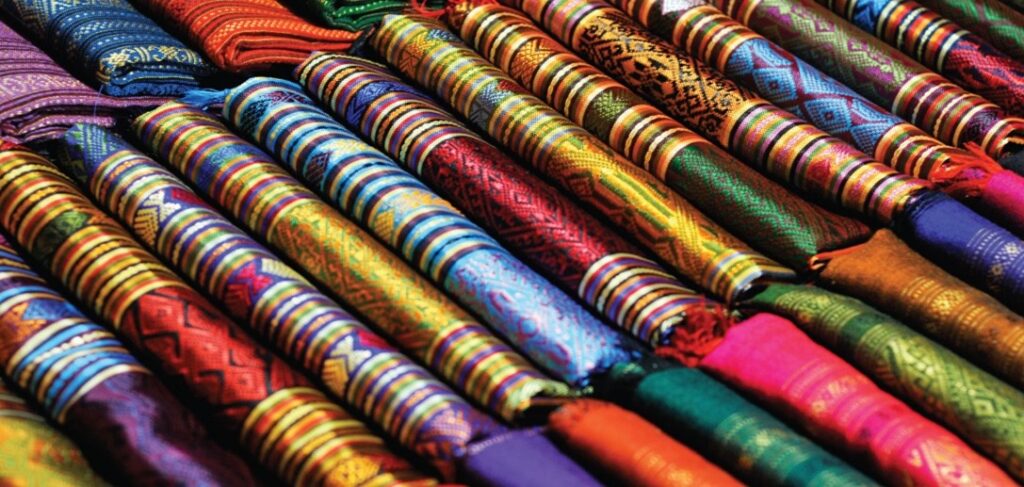
Photo credit: DTH Travel
Where to Experience or Buy Thai Silk
Thai silk is incredibly diverse, offering something for everyone. If you are not sure where to begin, you may start with one of the well-known varieties. They are easy to find and a great introduction. Choose your favorite, but please know there is a whole world of silk waiting to be explored.
- Pha Jok from Mae Jam, Chiang Mai is unique with patterns deeply rooted in cultural symbolism and nature.

Photo credit: Chiangmai News
- Pha Yok (brocade silk) from Lamphun is a silk woven with a brocade technique, which creates raised patterns with silver, gold, or colored silk threads. It features intricate floral designs like lotus petals and rice bundles.
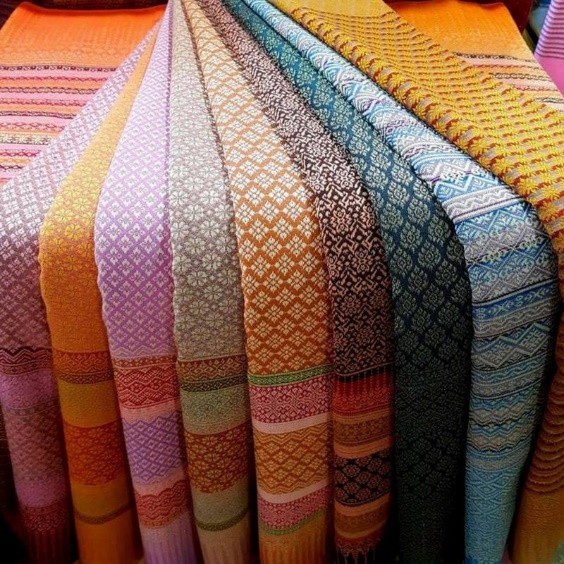
Photo credit: Lamphun
- Surin silk, particularly known for its Hol fabric, is a traditional textile of the Thai-Khmer ethnic group. Hol silk is woven using the innermost silk threads, resulting in a smooth, dense yet lightweight fabric. Its distinctive patterns and colors reflect Khmer artistic influences.
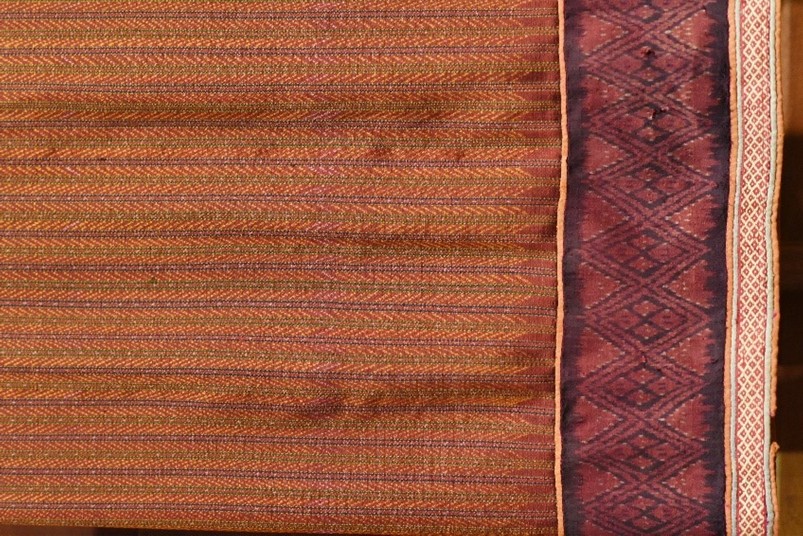
Photo credit: ich-thailand
- Khaen Kaen Khun (แคนแก่นคูณ) patterned silk of Khon Kaen is developed in collaboration with local scholars and the province to give Khon Kaen silk a unique identity and elevate its cultural and artistic value.
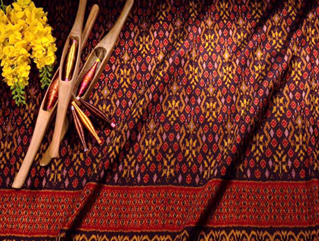
Photo credit: chobmai
- The lotus-dyed silk of Udon Thani is inspired by the province’s famous Red Lotus Sea at Nong Han Lake. Locals have developed a chemical-free dyeing technique using different parts of the lotus. The result is a beautiful, long-lasting, and eco-friendly silk that showcases both tradition and innovation.

Photo credit: Thai Tourism Thailand
- Ban Krua silk of Bangkok is the traditional silk fabric of the Cham people (ชาวจาม), whose descendants have preserved this craft for over 130 years. Today, only a few families continue the legacy, weaving intricate patterns such as the traditional turtle shell pattern.
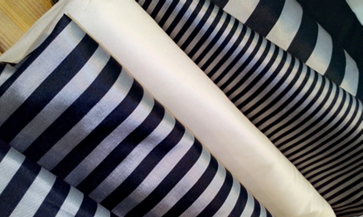
Photo credit: Manager Online
- Pha Yok Muang Nakhon is a silk and metal brocade style of textile from Nakhon Si Thammarat province, known for its highly intricate weaving technique. It nearly faded into history, but thanks to the revival efforts of the SUPPORT Foundation, the weaving of Pha Yok Muang Nakhon has been restored.
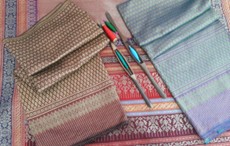
Photo credit: Etsy
- Na Muen Sri silk (ผ้าทอนาหมื่นสี) from Trang is known for its 39 original patterns. While it can now be created in a spectrum of colors, the traditional identity lies in its iconic red and yellow tones.
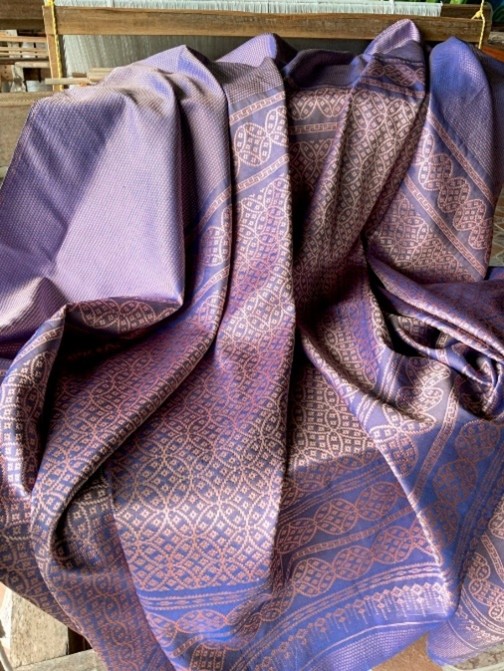
Photo credit: ตลาดเกษตรกรออนไลน์
Values Behind the Threads
If you are interested in learning more about Thai silk, two must-visit destinations in Bangkok offer immersive experiences. The Queen Sirikit Museum of Textiles, located within the Grand Palace compound, showcases The Queen Mother’s dedication to reviving traditional Thai textiles. Visitors can explore exquisite displays of royal Thai dresses, historic fabrics, and the artistry behind silk weaving. Meanwhile, the Jim Thompson House offers a glimpse into the life of the American businessman who helped bring Thai silk to international fame. Set in a traditional Thai teak house, the museum features Thompson’s personal art collection and insights into the silk industry’s global rise.
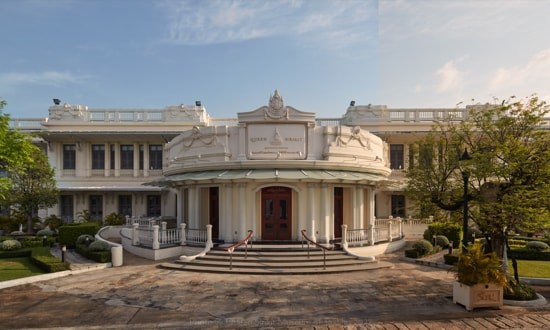
Photo credit: Royal Grand Palace
Thai silk continues to thrive through government-supported initiatives that promote local craftsmanship and preserve cultural heritage. Programs like One Tambon One Product (OTOP) highlight the unique silk products made in each district, empowering communities and generating sustainable income. Additionally, the Sustainable Arts and Crafts Institute of Thailand (SACIT) helps preserve traditional arts by certifying and promoting Thai silk craftspeople. Renowned companies like Jim Thompson also contribute to this legacy by offering high-quality silk recognized both locally and internationally.
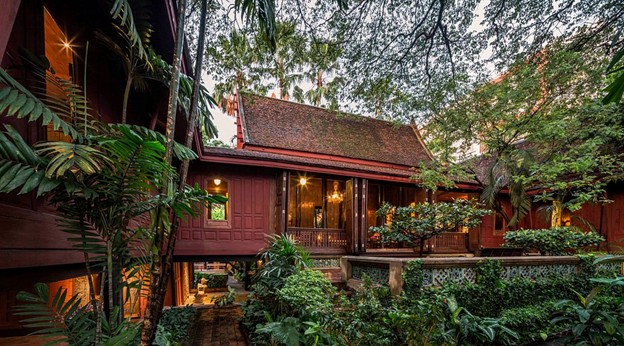
Photo credit: Trip Advisor
Thai silk represents an extraordinary fusion of craftsmanship, where the skills of Thai weavers are passed down through generations. The intricate process of weaving requires a deep mastery of technique. Each thread is carefully spun and dyed, often by hand, with patterns and designs that reflect both individual artistry and collective cultural heritage.
Respect for nature is deeply embedded in the Thai silk-making process. Weavers often draw inspiration from the natural world, adapting the colors, patterns, and textures found in their environment. The silk itself, sourced from the silkworm, is a direct product of nature, and many designs reflect elements such as flowers and animals.
At the heart of Thai silk is an openness to creativity and adaptation. While the traditions of Thai silk weaving are centuries-old, artisans continuously evolve their designs to suit modern tastes and global trends, ensuring that Thai silk remains relevant in contemporary fashion.
Thai silk is the ultimate expression of Thai beauty, artistry, and cultural pride. It weaves together the nation’s love for elegance, craftsmanship, and tradition in a way no other handicraft can. Thai silk is to be worn with pride. It is a statement of Thainess that turns heads and speaks for itself: this is Thai silk.
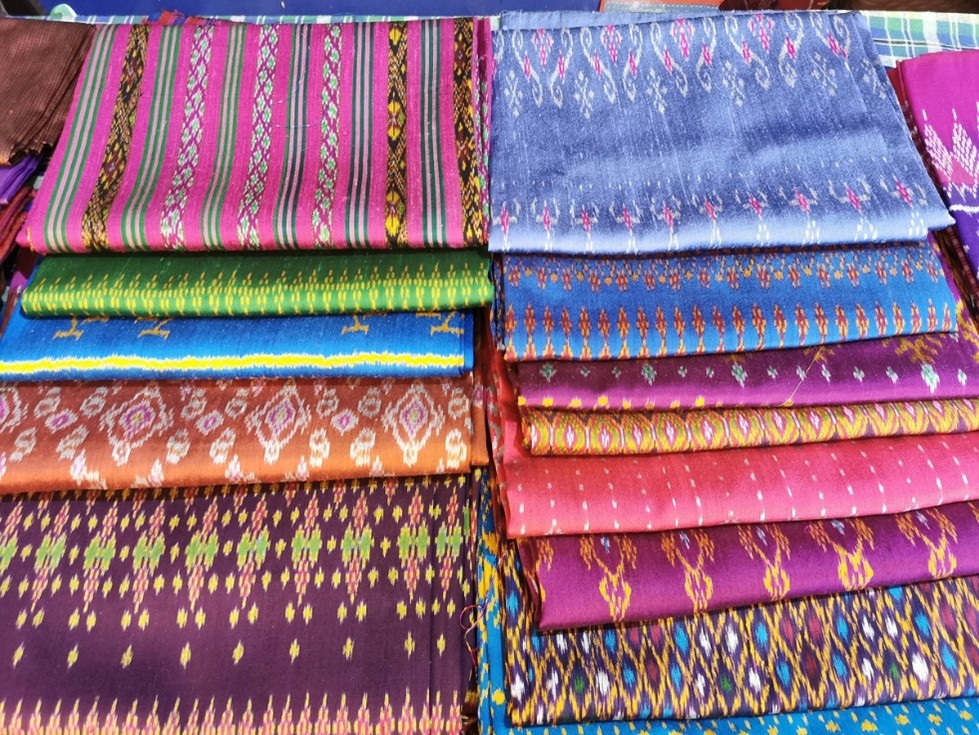
Photo credit: Prachanet
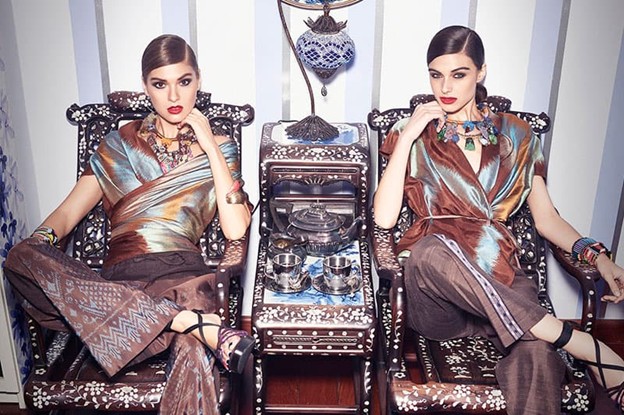
Conclusion
Thai silk stands as a vibrant and living heritage of the craftsmanship, cultural significance, and creativity of Thai artisans. These delicate threads are intertwined with deep-rooted history, connection to nature, and adaptability to modern times, fusing together as a symbol of national pride and identity. By supporting these artisans, whether through purchasing Thai silk products, wearing Thai silk, or learning about their craft, we not only celebrate this remarkable creation but also ensure that the rich art of silk weaving thrives in the modern world.
Thai silk is an iconic aspect of Thai culture and heritage, a craft embodying Thai artistry, environmental consciousness, and national identity. Join us in exploring more stories of Thailand and the Thai people as we take you on a journey to discover Thainess.
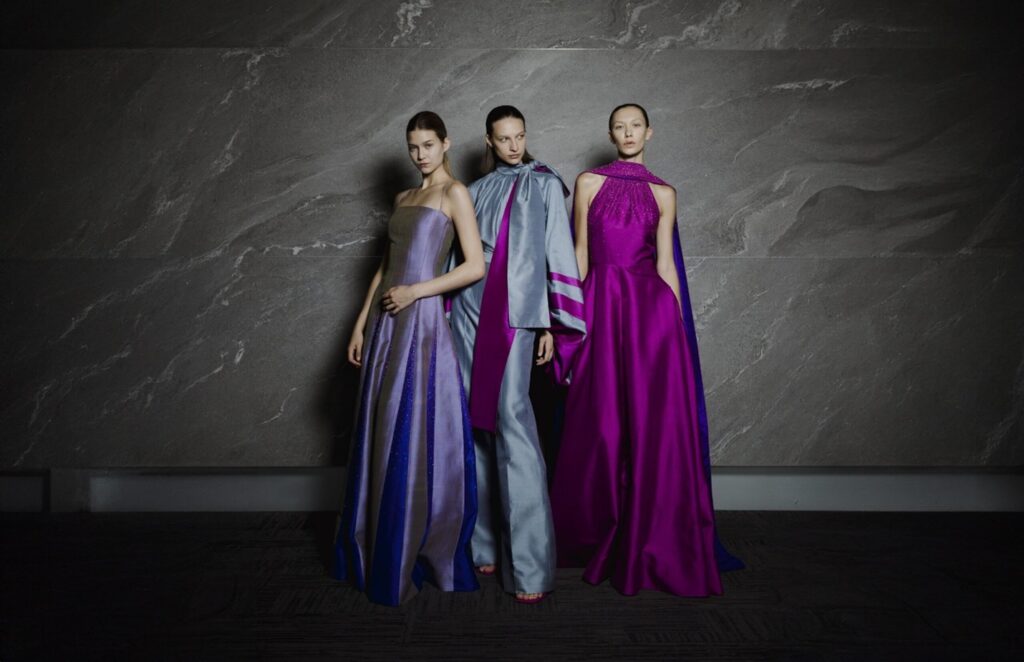
Photo credit: Asava Group
Resources
- https://shorturl.at/z5i9Z
- https://qsds.go.th/newosrd/wp-content/uploads/sites/115/2021/02/mai2.pdf
- https://shorturl.at/OPxcR
- https://www.silpa-mag.com/history/article_83127
- https://www.thailandfoundation.or.th/culture_heritage/the-making-of-thai-silk/
- https://qsds.go.th/newqsissout/?page_id=2097
- https://shorturl.at/QuBtx
- https://shorturl.at/kfolg
- “ผ้าไหมแพรวา” งามล้ำค่าหัตถศิลป์ภูไท – KiNdconnext
- ผ้าแพรวา : ราชินีไหมหัตถกรรมผู้ไทกาฬสินธุ์ – ศูนย์สารนิเทศอีสานสิรินธร
- Elie Saab’s spring couture in Paris dreams of Thai escape | The Independent
- Bangkok Post – Thai Silk shifts to iconic lifestyle company
- Bangkok Post – Thai fashion has sprung!
- Elite Plus Magazine | 12th Celebration Of Silk: Thai Silk Road To The World
- The Queen of Thai Silk — CoutureNotebook
